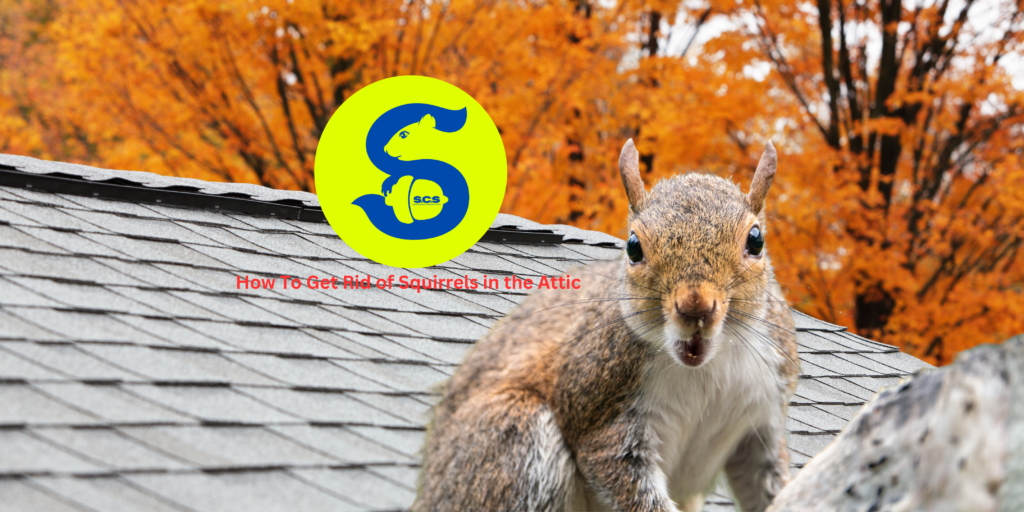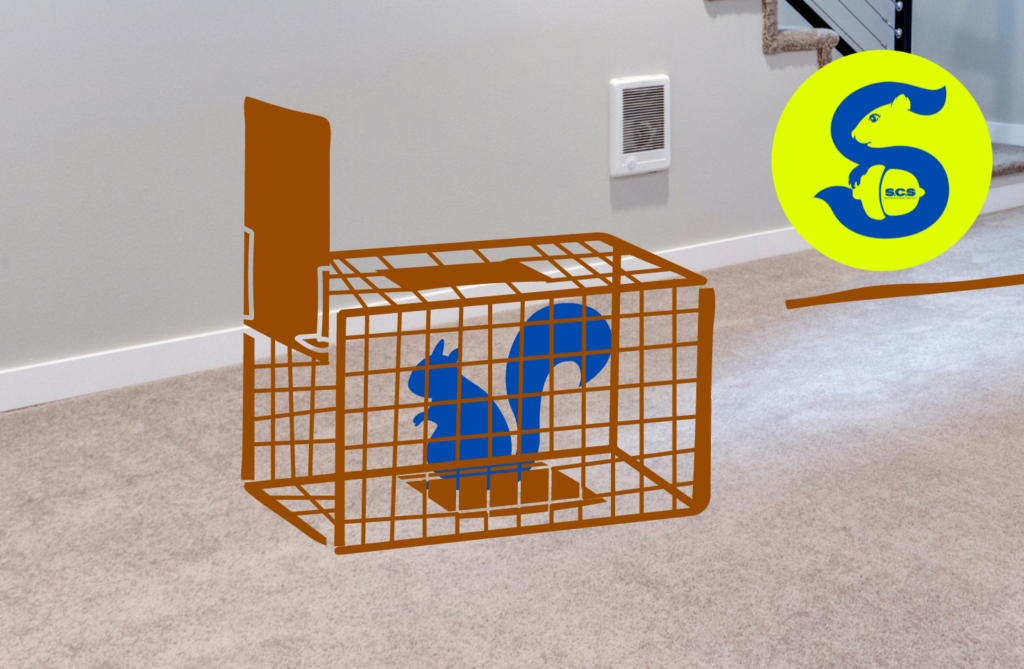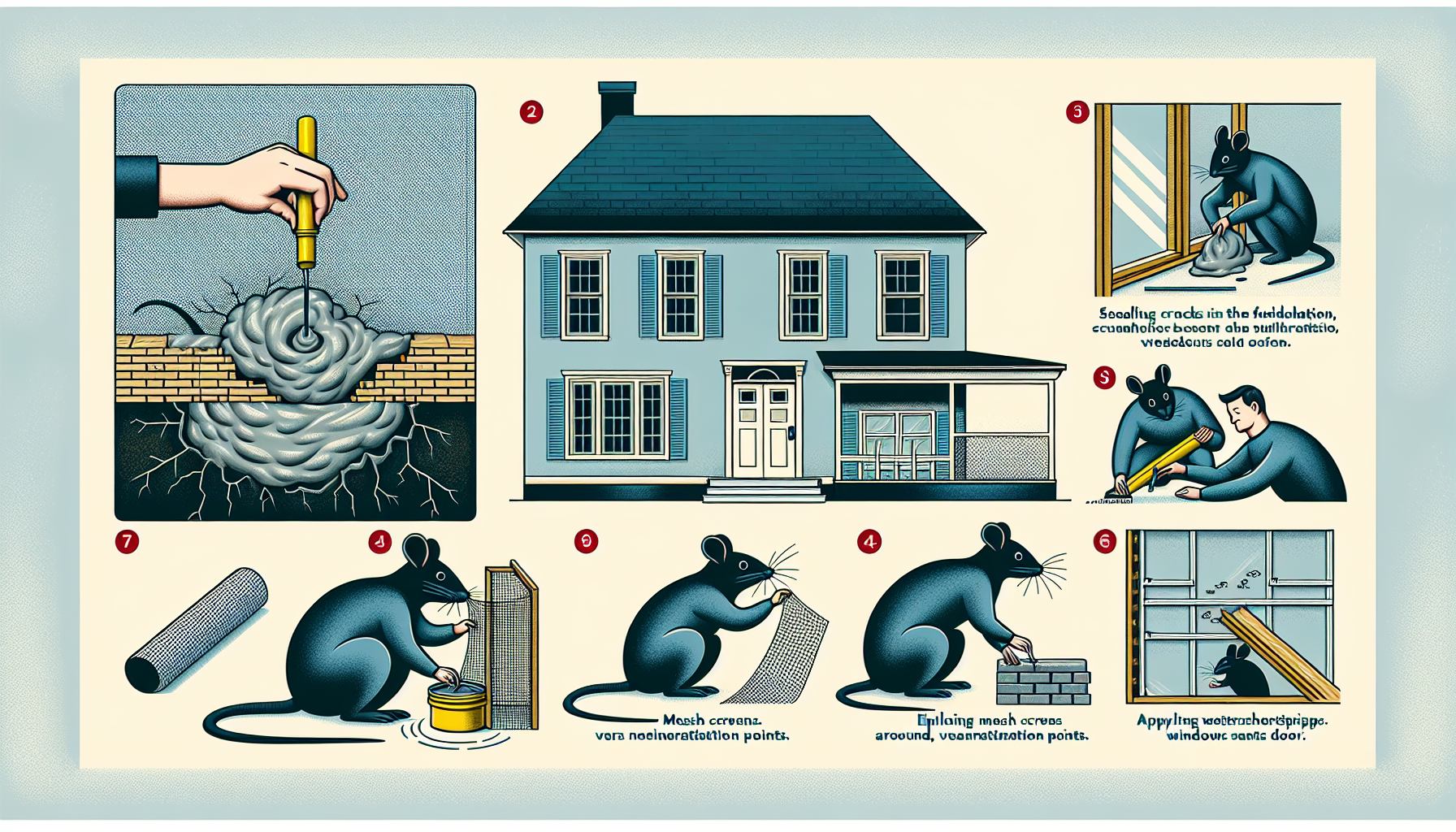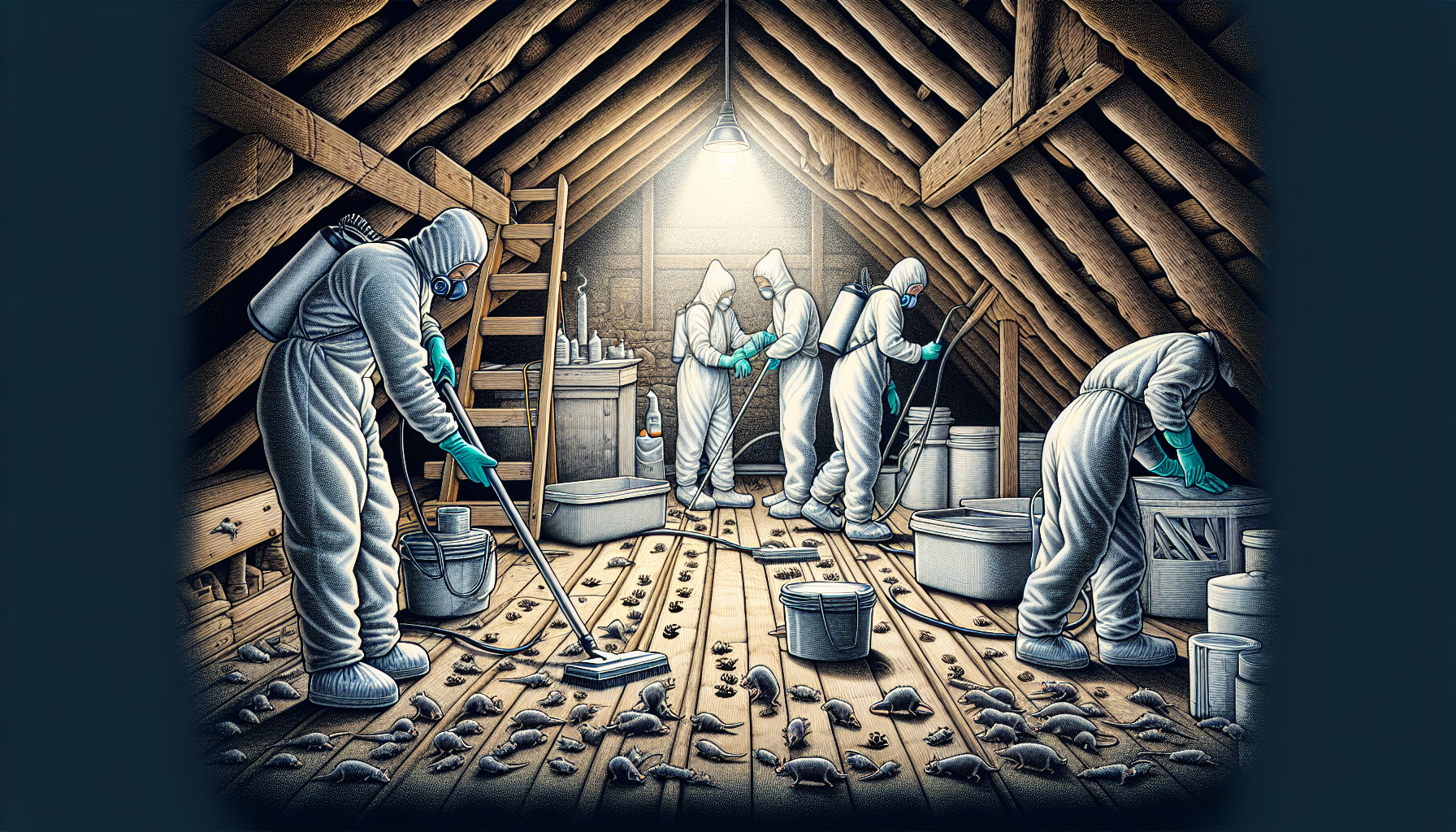The Art of Controlling Squirrels on Your Property
Squirrels may be cute to watch as they scurry around your yard, but when tree squirrels decide to take up residence in your home or garden, they can become quite the nuisance. In Southern Ontario, where both urban and suburban areas offer plenty of food and shelter, squirrel infestations are not uncommon. To get rid of squirrels, managing these furry invaders requires a blend of knowledge, patience, and humane methods.
Understanding Squirrels in Southern Ontario
Before diving into control methods, it’s essential to understand the type of squirrels you’re dealing with. The most common species in Southern Ontario are the Eastern Gray Squirrel and the Red Squirrel. Ground squirrels, which are different from tree squirrels, are typically found in open fields and grasslands. They are known for their burrowing habits and tend to live in colonies, unlike the solitary tree squirrels. Eastern gray squirrels are common pests in residential areas, often invading attics and causing structural damage. These creatures are highly adaptable, and known for their agility and persistence in finding food and shelter.
Squirrels typically build nests, known as dreys, in trees or attics, using leaves, twigs, and other soft materials. The flying squirrel, known for its nocturnal nature and gliding abilities, can also be a concern. They are particularly active during the early morning and late afternoon, which is when you’re most likely to spot them. Flying squirrels can cause significant damage when they enter homes, often using small cracks in eaves and soffits for access. Understanding their behavior, like storing food for winter or gnawing on objects to maintain their teeth, can help you anticipate their actions and control their presence effectively.
The fox squirrel, a large species within the tree squirrel family, can grow from 19 to 29 inches long. Fox squirrels prefer specific habitats such as oak, pine, and mixed forests, differentiating them from other squirrel species.
Signs of Squirrel Infestation
Detecting a squirrel infestation early can save you from more significant damage down the line. Common signs include:
- Noises: If you hear scratching, scurrying, or gnawing sounds coming from your attic or walls, especially during the early morning or late afternoon, it’s a likely indication of squirrel activity.
- Droppings and Chewed Wires: Squirrels leave behind droppings similar to those of rats, and they often chew on wires, insulation, and wood, which can pose serious safety hazards.
- Nests: Discovering nests made of leaves and twigs in your attic or near your home is a clear sign that squirrels have moved in.
Risks Associated with Squirrel Infestation
While squirrels may seem harmless, their presence in your home can lead to several issues:
- Structural Damage: Squirrels have strong teeth that can gnaw through wood, insulation, and even electrical wires, leading to expensive repairs and potential fire hazards.
- Health Risks: Squirrels can carry parasites like ticks and fleas, and their droppings may harbor harmful bacteria and pathogens.
- Garden Damage: Squirrels are notorious for digging up bulbs, eating young plants, and raiding bird feeders, which can disrupt your gardening efforts.
The best way to deal with a squirrel problem is to prevent it from happening in the first place. Here are some steps to squirrel-proof your property:
- Securing Entry Points: Inspect your home for gaps, holes, or weak spots where squirrels can gain entry. This includes vents, chimneys, and rooflines. Seal any openings with durable materials like metal mesh or heavy-duty caulk.
- Proper Waste Management: Keep your garbage secured in tightly closed bins and avoid leaving pet food or birdseed outside, as these are prime attractants for squirrels.
- Landscaping Tips: Trim tree branches that hang close to your home to prevent squirrels from accessing your roof. Planting squirrel-repelling plants like daffodils or hyacinths can also help.
Humane Squirrel Trapping and Relocation
If squirrels have already moved in, humane squirrel removal through trapping and relocating them is a humane way to handle the situation. Here’s how:

- Humane Traps: Use live traps that allow you to capture squirrels without harming them. Place these traps in areas where squirrel activity is frequent, such as near entry points or along their routes.
- Legal Considerations: In Southern Ontario, it’s essential to check local regulations regarding the trapping and relocation of wildlife. Some areas require permits, and there are often restrictions on where you can release squirrels.
- Best Practices for Release: When relocating a squirrel, ensure that you release it at least 10 kilometers away from your property in a suitable habitat like a forested area. This helps prevent the squirrel from returning.
Using Squirrel Repellents
Repellents can be an effective part of your squirrel control strategy:
- Natural Repellents: These include substances like peppermint oil, cayenne pepper, or vinegar, which squirrels find unpleasant. Spraying these around potential entry points can deter squirrels.
- Chemical Repellents: These are commercially available products that emit a scent or taste that squirrels dislike. While effective, they need to be reapplied regularly.
- Ultrasonic Devices: These gadgets emit high-frequency sounds that are supposed to deter squirrels and other pests. However, their effectiveness can vary, and they may not work in all situations.
Professional Squirrel Control Services
Sometimes, a squirrel infestation is too severe for DIY methods, and professional squirrel removal in Toronto is crucial to address infestations and prevent damage to homes:
Squirrel Removal Cost
- Removal: One-Way Door, Trapping
- Repair: Shingles, Vents, Soffit
- Prevention: Reinforce Vulnerable Areas
- When to Call a Professional: If you’ve tried traps and repellents without success, or if you’re dealing with multiple squirrels or extensive property damage, it’s time to call in the experts.
- What to Expect: A professional squirrel pest control service will inspect your property, identify entry points, and use a combination of traps, exclusion devices, and repellents to remove the squirrels and prevent future infestations.
- Costs: The cost of professional squirrel removal varies based on the extent of the infestation and the methods used but expect to pay between $200 and $500 for comprehensive service.
DIY Squirrel Control Tips
For those who prefer a hands-on approach, here are some DIY tips:
- Homemade Deterrents: Mix cayenne pepper with water and spray it around your home’s perimeter. You can also use ammonia-soaked rags as a temporary deterrent in areas where squirrels are active.
- Squirrel Trap: Use a squirrel trap by placing it along well-traveled paths and areas of foraging. Ensure you follow local trapping regulations and consider the relocation distance for captured squirrels.
- Squirrel-Proof Bird Feeders: Install bird feeders with squirrel-proof designs, such as those with weight-sensitive mechanisms that close off access to squirrels.
- Exclusion Devices: These are one-way doors or funnels that allow squirrels to exit your home but not re-enter. They’re particularly useful when you’ve already sealed other entry points.
Repairing Squirrel Damage
Once you’ve removed the squirrels, repairing the damage they caused is crucial:
- Structural Repairs: Patch up any holes or gaps in your home’s exterior and replace chewed wires or damaged insulation to prevent future infestations.
- Cleaning and Disinfecting: Squirrel nests and droppings can harbor diseases, so it’s important to clean and disinfect affected areas thoroughly. Wear protective gear to avoid exposure to contaminants.
- Restoring Gardens: If squirrels have damaged your garden, replanting and using protective barriers like netting or fencing can help your plants recover.
Long-Term Squirrel Prevention Strategies
To ensure squirrels don’t return, adopt these long-term prevention strategies:
- Regular Inspections: Periodically check your home and property for new entry points or signs of squirrel activity.
- Ongoing Maintenance: Keep trees trimmed, waste properly managed, and entry points sealed. Regular maintenance is key to preventing squirrels from finding a way in.
- Community Effort: Educating your neighbors about squirrel control can help create a squirrel-free neighborhood, reducing the likelihood of new infestations.
Legal and Ethical Considerations
When dealing with wildlife, it’s important to balance control efforts with ethical considerations:
- Local Wildlife Protection Laws: Familiarize yourself with the laws in Southern Ontario regarding the treatment and relocation of squirrels. This ensures your methods are legal and humane.
- Ethical Squirrel Control: Aim to use humane methods that prioritize the well-being of the squirrels, such as live trapping and relocation, over lethal means. When you need to remove squirrels, ensure you seal entry points to prevent future issues.
- Balancing Human and Wildlife Needs: Understand that squirrels are part of the ecosystem. The goal is to manage their presence without causing harm, ensuring a balance between human habitation and wildlife preservation.
Seasonal Squirrel Control
Squirrel behavior changes with the seasons, so your control methods should adapt accordingly:
- Spring and Summer: Focus on repairing entry points and removing food sources as squirrels are more active during these seasons.
- Fall Preparation: As squirrels prepare for winter, they may be more determined to find shelter. Enhance your preventive measures to deter them during this time.
- Winter Strategies: Ensure your home is well-sealed, as squirrels seeking warmth may attempt to enter during colder months.
Success Stories: Case Studies of Squirrel Control
Learning from others’ experiences can be invaluable. Here are some real-life examples:
- Case Study 1: A homeowner successfully used exclusion devices and squirrel-proof bird feeders to eliminate a persistent squirrel problem in their attic.
- Case Study 2: Another property owner combined humane traps with landscaping modifications to keep squirrels out of their garden permanently.
- Case Study 3: A family in a suburban area reduced squirrel damage by educating their neighbors and implementing community-wide prevention strategies.
Conclusion
Squirrel control in Southern Ontario requires a thoughtful and humane approach. By understanding squirrel behavior, taking preventive measures, and using a mix of DIY and professional methods, you can protect your property while coexisting with these lively creatures. Remember, the key to success is persistence and vigilance.
FAQs
- How do I know if I have a squirrel infestation?
- Listen for noises, look for droppings, and inspect your attic or garden for nests. These are clear signs of squirrel activity.
- What’s the best way to trap a squirrel?
- Use a humane live trap baited with nuts or seeds. Place it near areas of high squirrel activity. For effective removing squirrels, consider hiring experienced technicians who can ensure proper wildlife control and provide preventive measures to deter squirrels from accessing bird feeders.
- Are squirrel repellents effective?
- They can be, especially when combined with other methods. Natural repellents and ultrasonic devices work best as part of a comprehensive control strategy.
- How much does professional squirrel removal cost?
- Professional services typically cost between $300 and $750 for one or two visits, depending on the extent of the infestation and the methods used.
- Can I legally relocate a squirrel in Southern Ontario?
- Yes, but check local regulations for specific guidelines on trapping and relocation to ensure compliance with wildlife protection laws.











